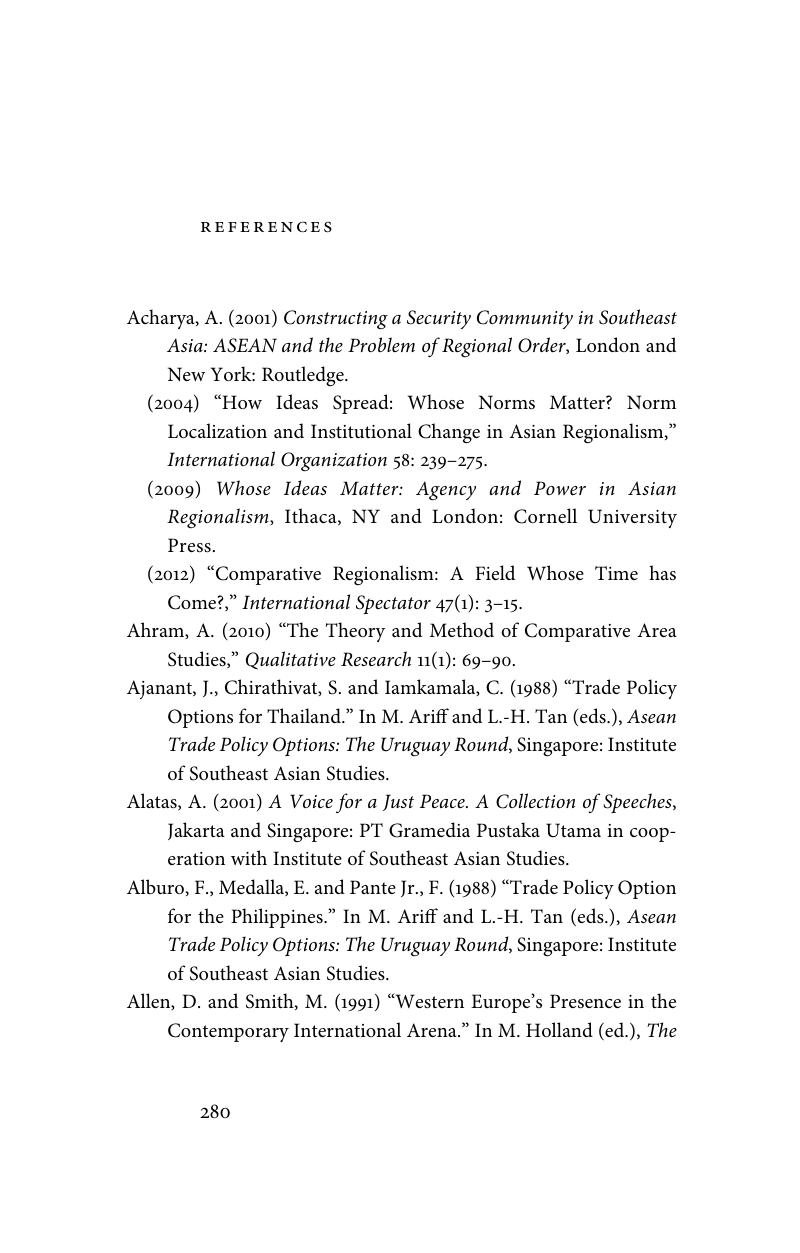Book contents
- Frontmatter
- Contents
- List of tables
- General editor's preface
- Acknowledgements
- List of abbreviations
- 1 Introduction
- 2 Analytical framework: a cognitive approach of externalization
- 3 ASEAN's cognitive prior and negotiating capacities
- 4 ASEAN as a negotiator in global fora: stages of negotiation
- 5 ASEAN as an actor in global fora: negotiation strategies
- 6 Case studies
- 7 Conclusions and future options
- Executive summary
- References
- Index
- References
References
Published online by Cambridge University Press: 05 May 2015
- Frontmatter
- Contents
- List of tables
- General editor's preface
- Acknowledgements
- List of abbreviations
- 1 Introduction
- 2 Analytical framework: a cognitive approach of externalization
- 3 ASEAN's cognitive prior and negotiating capacities
- 4 ASEAN as a negotiator in global fora: stages of negotiation
- 5 ASEAN as an actor in global fora: negotiation strategies
- 6 Case studies
- 7 Conclusions and future options
- Executive summary
- References
- Index
- References
Summary

- Type
- Chapter
- Information
- ASEAN as an Actor in International ForaReality, Potential and Constraints, pp. 280 - 311Publisher: Cambridge University PressPrint publication year: 2015



